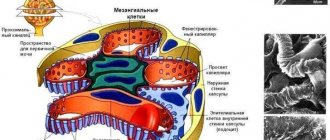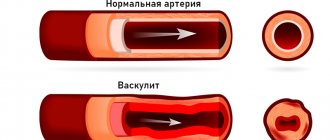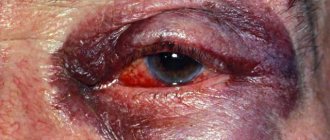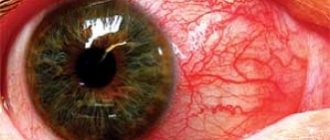What are the causes of sleep paralysis? The condition may occur unexpectedly. It causes fear and a feeling of horror in people of different ages. Sleep paralysis is a sleep disorder during which a person is unable to move or speak. This condition can occur due to the influence of many factors on the human body. If the therapy is carried out correctly, you can return full, healthy sleep in the shortest possible time. Only after a thorough medical examination is a doctor able to determine the true causes of this disease.
General information
View gallery
Sleep paralysis - what is it? Can you find out the cause at home? Sleep paralysis is a sleep disorder characterized by problems with muscle function. This condition can occur up to 4 times a night, while the person feels fear, a visual or auditory hallucination occurs. Paralysis is not life-threatening. The pathological condition is caused by an imbalance between the functioning of the brain and the work of the muscles. Only the attending physician can identify the main cause of sleep disturbance.
Sleep paralysis - interesting facts
Disputes on the topic of sleep paralysis - is it a disease or a mystical phenomenon periodically begin and die out, without reaching a common opinion. Most people will be much more interested in learning various facts about this condition:
- The more often a person experiences paralysis, the more intense it is. Scientists believe that many religious miracles, mystical phenomena, and alien abductions are actually just visions against the background of this state.
- The syndrome was first described in the 10th century by a Persian physician. A doctor from the Netherlands had a chance to see a patient in a state of stupor in the 17th century. He had to calm the patient down, convincing her that it was a nightmare.
- The artist Heinrich Fussli embodied his idea of sleep paralysis in the painting “Nightmare,” which depicts a woman with a demon sitting on her chest.
- One of the most frightening nightmares of the syndrome is the feeling of being in a dead body. Therefore, among various peoples, sleep paralysis has names that include words associated with death.
- Old witch syndrome is the opposite of somnambulism.
Symptoms of the phenomenon
If any of the signs of sleep paralysis syndrome appear, it is important to consult a doctor. The use of traditional methods of therapy can only do harm. After a thorough medical examination, the doctor is able to determine the cause of the pathology. This disorder is often confused with narcolepsy and other mental disorders.
In frequent cases, sleep paralysis occurs when falling asleep and during the active phase of sleep. What are the symptoms and causes of sleep paralysis? When this phenomenon occurs, the following symptoms occur:
- the person actively moves his eyes and cannot move;
- an attack of suffocation develops;
- pressure is felt in the chest area, as if someone was standing on it;
- a visual auditory hallucination occurs, the feeling that someone is present nearby;
- panicky feeling of fear.
If one of the symptoms occurs, it is important to seek help from your doctor, since this condition prevents a person from fully resting at night and causes severe discomfort.
Diseases characterized by organic paralysis
F. D. Roosevelt - 32nd President of the United States, confined to a wheelchair due to paralysis due to polio
- Stroke
- Spinal cord injury
- Trauma, including nerve damage (English)Russian.
- Polio
- Amyotrophic lateral sclerosis
- Botulism
- Multiple sclerosis
- Guillain-Barre syndrome
- Tick paralysis
- Poisonings (mercury compounds, neurotoxins (botulinum toxins, batrachotoxin, conotoxins, saxitoxin, tetrodotoxin and others), organophosphorus compounds, including chemical warfare agents, for example, DPP, tabun, sarin, soman, V-gases.)
For what reasons does it occur?
View gallery
What are the causes of sleep paralysis? Doctors say that sleep paralysis is a type of natural biological process. This phenomenon occurs due to an imbalance in the functioning of the motor system and consciousness. The main reason is disturbances in the functioning of the nervous system. Most often, the problem occurs in the active sleep phase, during which a person relaxes. If the muscles relax before the brain falls asleep, it will lead to paralysis. In frequent cases, this problem occurs in young people, but it can be diagnosed at any age. As medical practice shows, due to genetic predisposition, such a disorder can occur. What are the most common causes of sleep paralysis? Among the most common causes of sleep paralysis are:
- Psychiatric disorder.
- Systematic stress.
- Neurosis is one of the main causes of sleep paralysis in women.
- Taking an antidepressant.
- Alcohol abuse.
- Moving to another country.
- Hormonal imbalance.
- Overwork.
To reduce the risk of sleep paralysis, it is recommended to get plenty of rest, eat right and lead a healthy lifestyle, do not be nervous or worry about trifles. If one of the symptoms appears, you should seek help from a specialist.
Causes of spinal stroke
The main causes of acute disorders of spinal circulation are thromboembolism, compression, prolonged spasm, rupture of the vessels providing spinal blood supply. The etiofactors that provoke vascular catastrophe are numerous and varied. The versatility of the etiology gave rise to the division of factors causing spinal stroke into two main groups.
Primary vascular lesions:
- Anomalies of the spinal vessels:
arteriovenous malformations, aneurysms, kinks. They are quite rare. They create obstacles that slow blood flow. Thinning of the vascular wall in the area of the aneurysm or malformation provokes its rupture with the development of hemorrhagic stroke. - Changes in the vascular wall:
atherosclerosis, amyloidosis, varicose veins, vasculitis. Atherosclerosis of the aorta and spinal arteries is the most common cause of ischemic spinal stroke. Impaired blood supply occurs due to a decrease in the lumen of the arteries due to the formation of atherosclerotic plaques and blockage of blood vessels by masses detached from the plaque. - Damage to blood vessels
. Vascular rupture is possible due to spinal cord injury, damage to the vascular wall by a fragment due to a spinal fracture. Iatrogenic injuries that are a complication of lumbar puncture, spinal anesthesia, and surgical interventions in the spine are extremely rare.
Secondary hemodynamic disorders:
- Pathology of the spinal column
: spinal malformations, osteochondrosis, spondylitis, intervertebral hernia, spondylolisthesis. A change in the relative anatomical arrangement of the structures of the spinal column due to an anomaly, displacement of the vertebrae causes compression of the spinal vessels. Osteophytes and disc herniations also cause compression of nearby vessels. - Tumors of the spinal cord and spine.
As the tumor grows, it puts pressure on nearby vessels, reducing their lumen. Malignant tumors can grow into the walls of blood vessels, causing their thinning and destruction, leading to hemorrhage. - Damage to the spinal membranes
: arachnoiditis, meningitis. The inflammatory process spreads to the spinal vessels. Vasculitis leads to increased permeability, impaired elasticity, and the formation of thrombotic deposits in the area of the affected area of the vascular wall. - Blood diseases
: hemophilia, leukemia, coagulopathies, thrombocythemia. Accompanied by a violation of the rheological properties of blood and hemostatic mechanisms. Hemorrhagic spinal stroke occurs due to bleeding at the slightest vascular damage, ischemic - due to increased thrombus formation.
In many cases, spinal stroke develops as a result of several causes. The likelihood of pathology increases in the presence of contributing circumstances. The most significant predisposing factors are arterial hypertension, obesity, hyperlipidemia, physical inactivity, and smoking.
Main varieties
View gallery
Many people know what causes sleep paralysis, but not everyone knows its types. There are several types of sleep paralysis. These include:
- Hypnagogic, or semi-consciousness, occurs during the process of falling asleep, when the body enters sleep mode and muscle tissue relaxes. If the muscles have relaxed, but consciousness has not yet switched off, the person is on the verge of rest and wakefulness, while there is no ability to move. Under such conditions, a person does not understand why this condition arose, because of this, a feeling of fear and panic appears.
- Hypnopompic paralysis occurs a few seconds before awakening if, during the active sleep phase, the muscular system is relaxed or practically disabled, and brain activity is increased. If at this time the area of the brain that controls consciousness wakes up, and the muscles are still asleep, the person understands and evaluates the situation around him, but cannot move.
This phenomenon may last for several minutes. It is impossible to overcome the condition.
Pathological reflexes in this condition
There are also pathological reflexes, among them the Oppenheim, Babinsky, Gordon and Schaeffer reflexes are often noted. They act as pathological manifestations of extension. There are also non-standard flexion reflexes, these include the reflexes of Zhukovsky, Rossolimo, Mendel and Bekhterev.
Another clear sign of spastic paresis of the limbs are movements that are involuntarily repeated on the affected side. So, for example, if the patient bends the healthy leg at the knee, the affected limb will bend in the same way, but with less force. It is also necessary to pay attention to the gait against the background of spastic paresis. In this condition, patients cannot lift a limb, so they drag it along the ground.
Is this phenomenon dangerous to health?
Sleep paralysis - what is it? Can you find out the cause yourself? Night paralysis is a biological process that can occur due to disturbances in the functioning of the nervous system. Only a doctor can identify the factor that provokes the appearance of this condition. Experts say that a sleep attack is not life-threatening, but the problem should still be solved, since it affects the physical and mental health of the patient. Is sleep paralysis dangerous? A negative consequence can manifest itself in the form of:
- severe fear, which provokes respiratory spasms and disrupts the functioning of the cardiovascular system;
- Mental health may be impaired due to the fact that a person is not aware of what is happening around him.
Are there any complications? When one of the symptoms of sleep paralysis occurs, a person panics and fears for his life, but you should know that there is no threat to health. After a few minutes, the person’s breathing, heartbeat and overall normal well-being are restored. If pathology regularly manifests itself, it prevents a person from fully resting. Under such conditions, it is recommended to carry out a thorough medical examination and begin therapy. Due to frequent nighttime stupor, a person may develop chronic neurosis.
Why does sleep paralysis need to be treated? Mental and nervous disorders caused by lack of sleep make it difficult to lead a full and healthy lifestyle. It is important to understand the problem and not focus on it. The unpleasant feeling will go away after a few minutes, and there is no need to be afraid that you have serious health problems. Moving your limbs can help you get out of your stupor faster. Most often, negative consequences arise in the person who is very fixated on what happened. There is no need to associate this phenomenon with otherworldly forces or various diseases - in connection with this, sleep disturbances may occur. Why is sleep paralysis dangerous? Due to the fear of experiencing paralysis again, a psychological problem often arises in the patient. Under such conditions, complications manifest themselves in the form of:
- tachycardia;
- difficulty breathing;
- visual and auditory hallucinations;
- panic fear.
If a person often experiences sleep paralysis, it is recommended to visit a psychologist.
Central (spastic) paresis: symptoms, causes and treatment
Central or spastic paresis (hereinafter referred to as CP) is a clinical syndrome in neurology, which is based on damage to the neurons of the corticospinal (or pyramidal) tract at the level of the brain or the cervical and thoracic spinal cord.
Pyramidal tract
Pyramidal (corticospinal) tract. Source: ptt-online.org
The corticospinal tract is responsible for muscle contraction and movement of the body. This is a chain of neurons that transmit nerve impulses from the cerebral cortex - Betz's giant pyramidal cells - to the anterior horns of the spinal cord ending in the skeletal muscles.
At the level of the brain stem, 80% of the fibers transition to the opposite side. Thus, if the tract is damaged above the level of the chiasm, the manifestations of SVM will be on the opposite side of the body - contralateral. If the corticospinal tract is damaged below the level of the chiasm, then the manifestations will be on the same side - ipsilateral.
Causes
- stroke
- traumatic brain injury
- demyelinating disease (eg: multiple sclerosis)
- infectious and inflammatory diseases (encephalitis, encephalomyelitis, myelitis)
- spinal and brain tumors
The main symptoms of this condition, the most noticeable for the patient, are a decrease in muscle strength and impaired movement in the limbs and spasticity.
Often, CP leads to a permanent loss of motor function and the ability to move independently. If gross force violations persist, disability occurs.
Let's look at central paresis using the example of cerebral stroke. Cerebral means in the brain. The most common strength disorder is hemiparesis, when strength is reduced in the arms and legs on one side of the body.
Treatment
If possible, treatment should be aimed at eliminating the cause that led to the development of the syndrome. As an example, antibacterial therapy for an infectious disease. If it is not possible to influence the cause of the disease, as in the case of a stroke, for example, because cell death has already occurred, then restorative treatment begins.
If CP appears as a persistent consequence after several months, a course of restorative treatment is necessary, affecting all its manifestations.
- When muscle strength decreases, drugs are used that improve and stimulate the conduction of nerve impulses along the remaining fibers. A group of anticholinesterase drugs have this effect, but can be used in the absence of spasticity, which often occurs with this syndrome.
- Regular kinesiotherapy (or physical therapy) training to train strength, dexterity and range of motion in the affected limbs.
- Correction of spasticity or muscle hypertonicity. Muscle relaxants are prescribed - drugs that reduce muscle tone, relaxing the skeletal muscles in the affected limbs. If hypertonicity is pronounced, a course of botulinum therapy is carried out, introducing botulinum toxin or neuropeptide into the affected muscle groups. This action usually lasts for 2-3 months. Later, repeated neuropeptide administration procedures are needed to reduce spasticity.
Already with an increase in muscle tone above 2 points on the Ashworth scale (mAS), the use of botulinum therapy is recommended [evidence level 1A]
I note the importance of movement therapy - physical therapy exercises. Exercises to build strength and regain movement are the most important way to restore the strength lost in upper motor neuron syndrome.
Correction of muscle spasticity is the key to mobility in case of hypertonicity. Spasticity itself limits movement in the limbs, so first correct it, then exercise. Otherwise, it simply will not allow you to perform the necessary exercises.
If you find the article useful, you can thank me by clicking on one of the buttons below and share the article on social networks. I look forward to your comments.
neurologist Postnikov Alexander Yurievich
Is it possible to cause such a phenomenon?
Although many people are afraid of sleep paralysis, there are also those who are interested in falling into this state and experiencing an out-of-body experience. In frequent cases, people who are interested in esotericism try to cause such a violation.
There are several ways to stimulate an attack. Namely:
- Lie on your back and remove the pillow from under your head. You must try to sleep. During the process of falling asleep, we analyze the sounds that change around the body.
- You need to relax as much as possible after a hard and tiring day, drink strong coffee and go to bed. The body will relax, and coffee will provoke excessive brain activity. For this reason, this phenomenon occurs.
- Before going to bed, you need to imagine the feeling of flying. To do this, relax your muscles. When the necessary sensation is achieved, it can cause sleep paralysis.
Doctors do not recommend conducting experiments on your health, as this may provoke the development of other problems.
Examination of patients with paralysis
When interviewing a patient with paralysis, the neurologist clarifies:
- how long ago the lack of strength in any muscle group occurred;
- what immediately preceded the onset of complaints (diarrhea, consumption of canned foods, severe headache, fever);
- whether anyone in the family had similar signs of the disease;
- whether the patient’s place of residence or profession is associated with exposure to harmful substances (salts of heavy metals, organic solvents).
Then the doctor conducts a neurological examination: assessing muscle strength on a five-point scale, looking for other symptoms of neurological pathology (facial asymmetry, lack of reflexes, muscle thinning (atrophy), strabismus, swallowing disorders). After a physical examination, he prescribes tests. A general blood test can detect signs of inflammation (increased erythrocyte sedimentation rate, leukocyte count), increased levels of muscle metabolic products (creatine kinase). A toxic blood test may reveal signs of inflammation.
A test with proserin allows you to identify myasthenia gravis (a disease characterized by pathological muscle fatigue). Electroneuromyography at the Yusupov Hospital is performed by neurophysiologists - leading experts in the field of physiology of the nervous system. Using a computer program, they assess the speed of nerve impulse transmission along nerve fibers and determine conduction blocks.
Electroencephalography allows us to evaluate the electrical activity of different parts of the brain, which changes in various diseases. Computed tomography and magnetic resonance imaging of the head and spinal cord make it possible to study their structure layer by layer, to identify a violation of the structure of its tissue, to determine the presence of hemorrhages, abscesses (cavities filled with pus), neoplasms, and foci of decay of nervous tissue.
Carrying out diagnostics
View gallery
Sleep paralysis - what is it? The causes and treatment of this condition should be discussed with your doctor. Although this is a biological condition that is not harmful to health, it is important to find out the cause of the disorder. If the problem occurs regularly, it is important to contact a qualified professional. A neurologist and somnologist will help you find out the cause of this phenomenon. Initially, the doctor analyzes the symptoms that cause discomfort to the patient and disrupt sleep, causing chronic fatigue and lack of sleep. Based on the data obtained, the medical professional prescribes the appropriate treatment. The patient needs to write down all his sensations during therapy. Among the main research methods of the problem are:
- surveys;
- test;
- studying patient complaints;
- assessment of signs of the syndrome;
- conducting polysomnography;
- study of average sleep latency;
- neurological, psychological diagnostics.
Only a doctor can find out the cause of sleep paralysis. The explanation for this phenomenon must be based on the results of the patient's examination. It is not recommended to use traditional methods of therapy, since self-medication can provoke the development of other diseases. Do not underestimate herbs and infusions, since they have exactly the same powerful effect as antibiotics.
What is facial paralysis
Bell's palsy is quite common and is caused by:
- infectious diseases (diphtheria, mumps);
- traumatic injuries;
- hypothermia;
- cancerous tumors;
- impaired blood flow due to hypertension and atherosclerosis;
- consequences of otitis media;
- inflammatory processes in the brain.
Facial paralysis develops at a very fast pace and can occur at any age, but most of all it affects people who have crossed the 60-year mark. The causes of this disease have not been reliably studied; it is only known that the mechanism of its occurrence is due to swelling of the facial nerve, which occurs due to a viral infection or immune failure.
Methods of therapy
View gallery
So, a person has sleep paralysis. How to get rid of the problem? If any phase of sleep is disturbed, this does not indicate that pathology is present, but doctors still recommend eliminating the problem, since this can provoke the development of health complications. This pathology is not amenable to conservative treatment and can become chronic. During therapy it is important:
- normalize the daily routine;
- exercise regularly;
- eliminate muscle weakness;
- lead a healthy lifestyle;
- ventilate the room before going to bed;
- take a bath to relax;
- take vitamins;
- normalize nutrition;
- treat chronic diseases;
- Don’t be nervous, stress is one of the most common causes of sleep paralysis in women.
Doctors do not recommend getting nervous over trifles and thinking about problems before going to bed, as this can trigger sleep paralysis.
Treatment of spinal stroke
This disease requires urgent treatment measures. Early initiation of therapy makes it possible to stop the expansion of the spinal lesion area and prevent the death of neurons. Comprehensive conservative treatment is provided, corresponding to the type of stroke:
- Nonspecific therapy.
Prescribed regardless of the type of stroke, it is aimed at reducing edema, maintaining neuronal metabolism, increasing the resistance of spinal tissues to hypoxia, and preventing complications. It is carried out with diuretics (furosemide), neuroprotectors, antioxidants, B vitamins. - Specific therapy for ischemia
. Improving blood circulation in the ischemic zone is achieved by using vasodilating, disaggregating, and microcirculation-improving agents. For thromboembolism, anticoagulants are indicated: heparin, nadroparin. - Specific therapy for hemorrhage
. It involves the use of hemostatic pharmaceuticals: vikasol, epsilonaminocaproic acid. Additionally, angioprotectors are prescribed to strengthen the walls of blood vessels.
In case of rupture of a vessel, compression by a tumor, or thromboembolism, surgical treatment is possible. Operations are performed by neurosurgeons and vascular surgeons on an emergency basis. The list of possible surgical interventions includes:
- Reconstructive vascular operations
: thromboembolectomy, stenting of the affected vessel, suturing/clipping of the vascular wall defect. - Elimination of angiodysplasia
: excision of the malformation, ligation/sclerotherapy of the afferent vessels, resection of the aneurysm. - Elimination of compression:
removal of extra-/intramedullary spinal tumor, discectomy for hernia, spinal fixation.
During the recovery period, rehabilitation doctors use the entire arsenal of means to quickly restore lost neurological functions. Physical therapy, massage, and physiotherapy are prescribed. Electromyostimulation helps improve the conductivity of nerve fibers, and electrical stimulation of the bladder helps restore voluntary control of urinary function.
Treatment with drugs
If there is a disturbance between brain and muscle activity, you need to visit a doctor. Experts do not classify this phenomenon as a disease, so there is no special medication that will help cure sleep paralysis. First of all, the specialist must eliminate the cause of the violation. A medical professional prescribes medications to a patient to improve the process of falling asleep and strengthen sleep. What is used:
- With the help of Melatonin you can overcome insomnia. The drug stabilizes blood pressure and has a positive effect on the body's protective function. Must be taken several hours before bedtime. There are no side effects during treatment with Melatonin. The only disadvantage of the drug is the ban on therapy for children under 11 years of age. It is not recommended to carry out treatment during pregnancy and breastfeeding.
- With the help of "Vita-melatonin" you can restore a person's hormonal levels, as a result of which the production of serotonin increases, stress resistance improves, and physical and mental performance is stimulated. The only drawback of the drug is that it cannot be taken systematically. During therapy, the functioning of the gastrointestinal tract may be disrupted and allergies may appear.
- Neurostabil is a herbal preparation that soothes and strengthens the immune system. Prescribed to those people who systematically experience nocturnal stupor. Thanks to the healing composition, the body's resistance to stress increases. The advantage of the medicine is its harmless composition and the absence of side effects.
Before using any medication, it is important to consult a specialist, since self-medication can provoke the development of complications. Only after a thorough medical diagnosis will the doctor make a diagnosis and prescribe the treatment that will help solve the problem. The causes and treatment of sleep paralysis should be discussed with a neurologist and psychotherapist.
Treatment of facial paralysis
At the initial stages of the disease, the patient is prescribed glucocorticoids, which help reduce the severity and duration of residual paralysis. Antiviral drugs are prescribed: Valacyclovir, Acyclovir, Famciclovir.
Instillation of the diseased eye or isotonic solution, as well as application of a bandage, is used. After a week of treatment, vitamin complexes and agents to improve nerve conduction are prescribed.
In parallel, the following procedures are applied:
- physiotherapy;
- acupuncture;
- massage of the collar area;
- laser therapy;
- ultrasound;
- UHF electric field.
In severe cases, surgical intervention is used, which must be performed no later than 3 months from the moment the disease is detected. Otherwise, the pathology may remain forever. During surgery, microscopic decompression is performed to remove the bone covering the facial nerve. This is necessary to open the nerve sheath. Then the doctor prescribes certain exercises for the facial muscles, thanks to which it is possible to fully recover in most cases.
Taking vitamins
View gallery
A healthy lifestyle is the basis of good health and excellent well-being. Due to frequent nighttime stupors, the body's protective function decreases, this phenomenon negatively affects the general well-being of the patient. With the help of vitamins you can strengthen your immune system and prevent the development of many diseases. The main vitamins that the body needs include:
- Vitamin A will ensure full and healthy sleep. It is recommended to include hard cheese, dried fruits, egg whites and butter in the diet.
- B vitamins will increase stress resistance and restore brain function, eliminate chronic fatigue, and normalize sleep. You should regularly consume milk, seaweed, potatoes, nuts, and liver.
- Ascorbic acid stimulates the production of anti-stress hormone. Spinach, sweet peppers, berries and tomatoes have a positive effect on the patient’s well-being and improve sleep.
- Vitamin D helps you to fully relax and eliminates fatigue. Man receives this element through the rays of the sun and from sunflower oil and sea fish.
- Vitamin E has a positive effect on brain functioning and improves overall well-being. You can get the vitamin from seeds, vegetable oil, and nuts.
Insomnia occurs due to a lack of magnesium. To replenish the element, you need to include vegetables, nuts, and legumes in the menu. Proper nutrition not only normalizes sleep, but also strengthens the body's protective function.
The danger of lack of motor ability of the limbs
Paralysis of the limbs is the result of damage to the spinal cord. In the full form, the integrity of this organ is compromised. The degree of its damage affects the muscle failure of a certain area of the body.
At the level of the 4th, 5th and 6th cervical vertebrae it leads to tetraplegia - paralysis of all 4 limbs, but the patient can bend and raise his arms. If there is damage in the area of the 6th and 7th cervical vertebrae, the legs are taken away, the hands and wrist joints are paralyzed; The patient can only move his shoulder and move his arms very slightly.
If the lesion occurs at the level or above the 4th cervical vertebra, breathing is paralyzed, which in most cases ends in death.
Paraplegia is paralysis of both legs that occurs due to transverse lesions of the spinal cord in the area of the lumbar and thoracic vertebrae.
All situations of spinal cord injury are characterized by impaired sensitivity of the affected areas.
Preventive measures
View gallery
To prevent the occurrence of sleep paralysis, it is necessary to follow the recommendations of specialists, namely:
- eat properly and balanced;
- lead a healthy lifestyle;
- do not overwork;
- exercise;
- do not abuse medications;
- do not watch thrillers and horrors before bed;
- walk outdoors more often.
If you follow all the advice of experts, you can reduce the risk of paralysis to a minimum. It is equally important to consult a doctor in a timely manner, since the general health of the patient completely affects the quality of sleep. If there are psychological disorders, sleep paralysis may occur. In this case, it is advisable to visit a psychologist - it will not be superfluous. At a time when a person is experiencing difficulties, psychological problems may arise. Only specialists will help you understand your inner world.
Prognosis and prevention
Spinal stroke is not as life-threatening as cerebral stroke. A lethal outcome is possible with malignant neoplasms, a severe general somatic background, or the addition of a secondary infection. Timely treatment contributes to rapid regression of symptoms. The vastness of the affected area, the late start of treatment, and concomitant pathology cause incomplete recovery and disability of the patient due to persistent residual paresis, pelvic, and sensory disorders. Prevention of the disease is based on timely treatment of vascular diseases, identification and removal of malformations, treatment of intervertebral hernias, and prevention of spinal injuries. The elimination of predisposing factors is of great importance: maintaining an active lifestyle, normalizing weight, balanced nutrition, quitting smoking.
source












